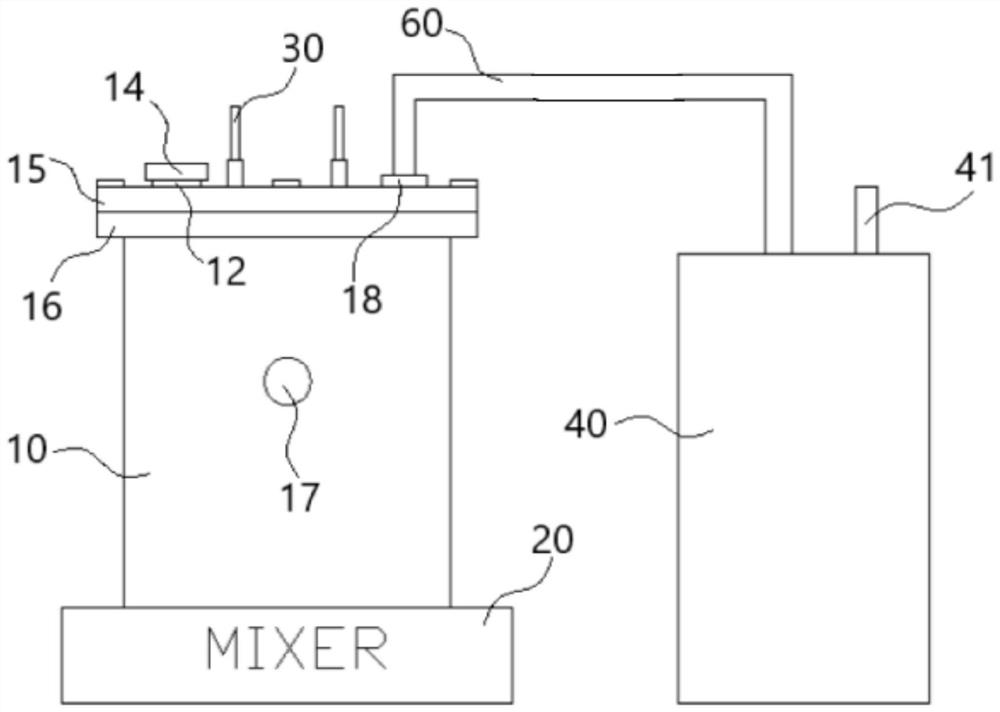Acquisition method of halohydrocarbon degrading flora suitable for bioelectrochemical repair system
A bioelectrochemical and remediation system technology, applied in the field of groundwater pollution control, can solve the problems of lack of microorganisms that degrade halogenated hydrocarbons, restrict the application of halogenated hydrocarbons, and the application of bioremediation technology for contaminated groundwater, and achieve the purpose of strengthening electrochemical in-situ microorganisms Restoration effect, strong environmental protection, implementation cost and strong environmental protection effect
- Summary
- Abstract
- Description
- Claims
- Application Information
AI Technical Summary
Problems solved by technology
Method used
Image
Examples
Embodiment 1
[0043] A method for obtaining halogenated hydrocarbon-degrading bacterial flora suitable for bioelectrochemical repair systems, which mainly includes the following steps:
[0044] S1. Configure 500ml of inorganic salt culture medium, add 50g of sediment, 0.9g of co-metabolism substrate and 3.4 μ L of trichlorethylene TCE, to obtain the first mixed solution, the cathode sheet and the anode sheet are connected to electricity, and the output current of the DC power supply is set to 20mA, and the magnetic stirrer 20 is turned on to fully carry out the first mixed solution. After stirring and cultivating for 7 days, the first generation of domesticated bacteria liquid is obtained; wherein, the composition of the inorganic salt medium is: KH 2 PO 4 0.53g / L, Na 2 HPO 4 12H 2 O 0.43g / L, MgSO 4 ·7H 2 O 0.037g / L and NaNO 3 0.85g / L, the sediment is contaminated by halogenated hydrocarbons, and the co-metabolism substrate is glucose;
[0045] S2. Adopt the method of TCE gradient...
Embodiment 2
[0050] S1. Configure 750ml of inorganic salt culture medium, add 50g of sediment, 1.44g of co-metabolism substrate and 3.4 μ L of trichlorethylene TCE, to obtain the first mixed solution, the cathode sheet and the anode sheet are connected to electricity, and the output current of the DC power supply is set to 30mA, and the magnetic stirrer 20 is turned on to fully carry out the first mixed solution. After stirring and cultivating for 7 days, the first generation of domesticated bacteria liquid is obtained; wherein, the composition of the inorganic salt medium is: KH 2 PO 4 0.53g / L, Na 2 HPO 4 12H 2 O 0.43g / L, MgSO 4 ·7H 2 O 0.037g / L and NaNO 3 0.85g / L, the sediment is contaminated by halogenated hydrocarbons, and the co-metabolism substrate is glucose;
[0051] S2. Adopt the method of TCE gradient acclimatization to subculture, select a clean incubator 10, and add 500 ml of sterilized inorganic salt medium and 50 ml of the first-generation domesticated bacterium liqu...
PUM
 Login to View More
Login to View More Abstract
Description
Claims
Application Information
 Login to View More
Login to View More - R&D
- Intellectual Property
- Life Sciences
- Materials
- Tech Scout
- Unparalleled Data Quality
- Higher Quality Content
- 60% Fewer Hallucinations
Browse by: Latest US Patents, China's latest patents, Technical Efficacy Thesaurus, Application Domain, Technology Topic, Popular Technical Reports.
© 2025 PatSnap. All rights reserved.Legal|Privacy policy|Modern Slavery Act Transparency Statement|Sitemap|About US| Contact US: help@patsnap.com



